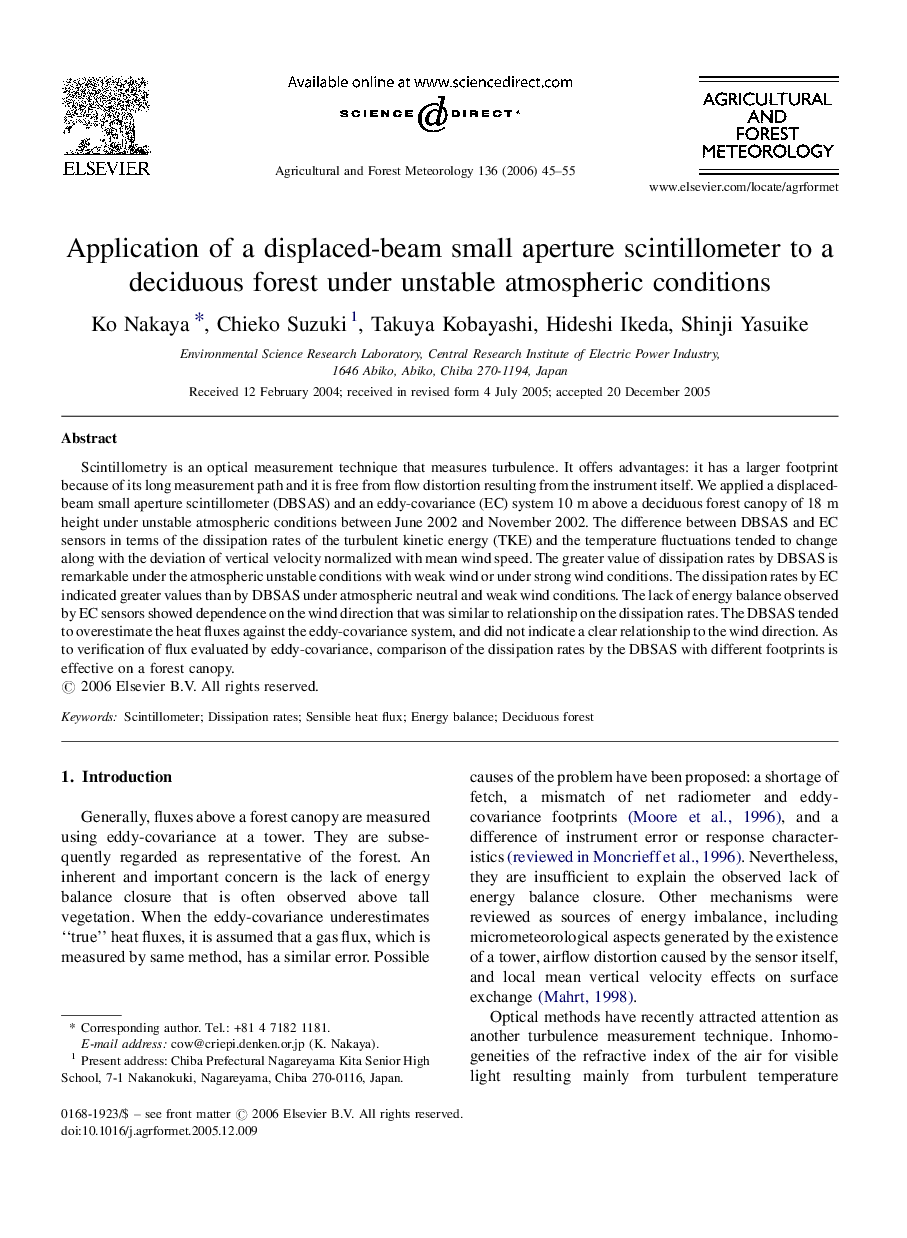| Article ID | Journal | Published Year | Pages | File Type |
|---|---|---|---|---|
| 83064 | Agricultural and Forest Meteorology | 2006 | 11 Pages |
Scintillometry is an optical measurement technique that measures turbulence. It offers advantages: it has a larger footprint because of its long measurement path and it is free from flow distortion resulting from the instrument itself. We applied a displaced-beam small aperture scintillometer (DBSAS) and an eddy-covariance (EC) system 10 m above a deciduous forest canopy of 18 m height under unstable atmospheric conditions between June 2002 and November 2002. The difference between DBSAS and EC sensors in terms of the dissipation rates of the turbulent kinetic energy (TKE) and the temperature fluctuations tended to change along with the deviation of vertical velocity normalized with mean wind speed. The greater value of dissipation rates by DBSAS is remarkable under the atmospheric unstable conditions with weak wind or under strong wind conditions. The dissipation rates by EC indicated greater values than by DBSAS under atmospheric neutral and weak wind conditions. The lack of energy balance observed by EC sensors showed dependence on the wind direction that was similar to relationship on the dissipation rates. The DBSAS tended to overestimate the heat fluxes against the eddy-covariance system, and did not indicate a clear relationship to the wind direction. As to verification of flux evaluated by eddy-covariance, comparison of the dissipation rates by the DBSAS with different footprints is effective on a forest canopy.
